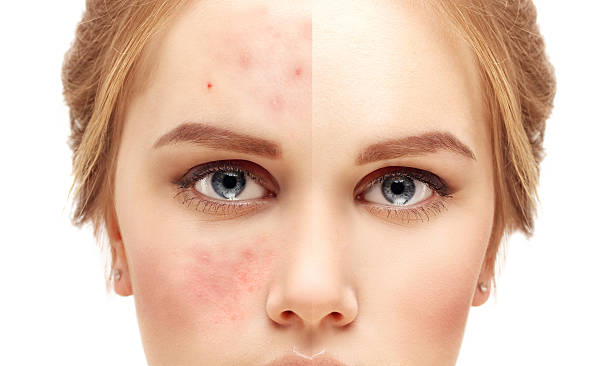
Introduction
Dealing with acne scars can be a frustrating and challenging experience for many individuals. These scars not only affect the skin’s appearance but also impact self-esteem and confidence. Fortunately, advancements in dermatology offer effective solutions to address acne scars and restore smooth, clear skin. One such solution is subcision treatment for acne scars Abu Dhabi, a revolutionary procedure that targets the root cause of acne scars and delivers remarkable results.
Understanding Acne Scars
Acne scars are the result of inflammation caused by acne breakouts. When the skin’s pores become clogged with excess oil, dead skin cells, and bacteria, it can lead to the formation of pimples, blackheads, and whiteheads. In severe cases, the inflammation can damage the skin’s collagen fibers, resulting in permanent scarring. There are different types of acne scars, including atrophic scars, which appear as depressions or pits in the skin, and hypertrophic scars, which are raised and thickened areas of scar tissue.
What is Subcision Treatment?
Subcision treatment is a minimally invasive procedure designed to improve the appearance of depressed acne scars. Unlike topical treatments or laser therapy, which target the surface layers of the skin, subcision works by breaking up fibrous bands of scar tissue that pull down the skin’s surface, creating indentations. By releasing these bands, subcision allows the skin to elevate and fill in the depressed areas, resulting in a smoother, more even complexion.
Procedure Overview
During a subcision treatment session, a dermatologist or trained medical professional will first cleanse and numb the treatment area to ensure patient comfort. Next, a specialized needle or cannula is inserted beneath the skin to gently release the fibrous bands of scar tissue. This process is repeated across the entire scarred area until the desired improvement is achieved. Following the procedure, patients may experience mild bruising, swelling, or redness, which typically subside within a few days.
Benefits of Subcision Treatment
Subcision treatment offers several advantages for individuals with acne scars. It is suitable for all skin types and can be performed on various areas of the face and body affected by scarring. Unlike more invasive procedures such as surgical excision, subcision is minimally traumatic and requires little to no downtime, allowing patients to resume their normal activities shortly after treatment. Additionally, subcision can yield long-lasting results, with many patients experiencing significant improvement in their skin texture and overall appearance.
Eligibility and Considerations
While subcision treatment is generally safe and effective, not everyone may be a suitable candidate. Individuals with active acne, skin infections, or certain medical conditions may need to postpone treatment until their condition is stable. Additionally, individuals with a history of keloid or hypertrophic scarring may require careful evaluation and monitoring to minimize the risk of complications. Consulting with a qualified dermatologist or cosmetic surgeon is essential to determine candidacy and develop a personalized treatment plan.
Preparation and Aftercare
Before undergoing subcision treatment, patients may be advised to discontinue the use of certain skincare products or medications that could increase the risk of bleeding or bruising. Following the procedure, patients should follow their dermatologist’s instructions for post-treatment care, which may include gentle cleansing, moisturizing, and sun protection. Avoiding harsh skincare products, excessive sun exposure, and picking at treated areas can help optimize results and minimize the risk of complications.
Subcision Treatment vs. Other Options
While subcision treatment is highly effective for improving depressed acne scars, it may not be suitable for all scar types or skin conditions. Alternative treatment options, such as laser therapy, microneedling, chemical peels, or dermal fillers, may be recommended for individuals with different scar characteristics or treatment preferences. Consulting with a dermatologist can help individuals explore the various options available and determine the most appropriate treatment approach for their specific needs and goals.
Real Patient Stories
Many individuals who have undergone subcision treatment for acne scars have reported significant improvements in their skin texture and confidence. Before-and-after photos and personal testimonials from satisfied patients can provide valuable insight into the potential benefits of subcision treatment and inspire others who may be considering similar procedures. Hearing real patient stories can help alleviate concerns, build trust in the treatment process, and encourage individuals to take the first step towards achieving clearer, smoother skin.
Conclusion
In conclusion, subcision treatment offers a safe, effective, and minimally invasive solution for individuals seeking to improve the appearance of acne scars. By targeting the underlying cause of scarring and promoting collagen remodeling, subcision can help elevate depressed areas of the skin and restore a more youthful, radiant complexion. With proper evaluation, preparation, and aftercare, individuals can achieve remarkable results and regain their confidence in their skin’s appearance.
FAQs
-
Is subcision treatment painful?
- Subcision treatment is typically well-tolerated and performed under local anesthesia to minimize discomfort during the procedure.
-
How soon can I see results after subcision treatment?
- While some patients may notice improvements shortly after treatment, optimal results typically develop gradually over several weeks as the skin heals and collagen production increases.
-
Are there any side effects or risks associated with subcision treatment?
- Mild bruising, swelling, or redness may occur following subcision treatment, but these side effects are usually temporary and resolve on their own within a few days.
-
How many sessions of subcision treatment are required to achieve optimal results?
- The number of subcision treatment sessions needed varies depending on the severity of the acne scars and individual skin response. Most patients require multiple sessions spaced several weeks apart for best results.
-
Can subcision treatment be combined with other acne scar treatments?
- Yes, subcision treatment can be combined with other modalities such as laser therapy, microneedling, or dermal fillers to enhance results. A personalized treatment plan tailored to individual needs may include a combination of treatments to address various aspects of acne scarring and achieve the best possible outcome.




